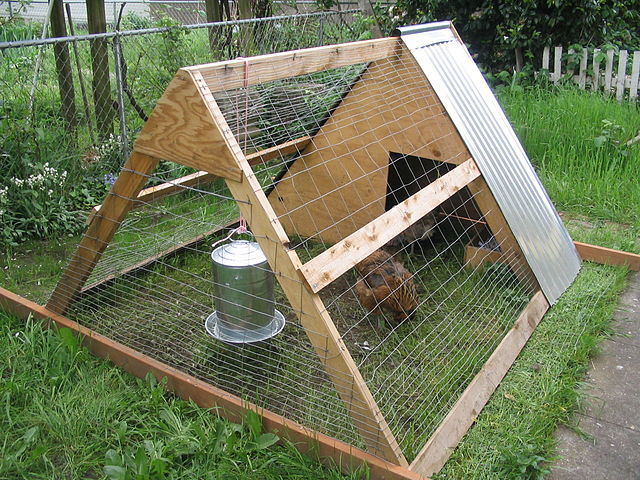The Ultimate Cheat Sheet On Portable Chicken Coop Plans
If you are looking for a cheat sheet that can simplify the process of selecting chicken coop plans, gathering tools and materials and assembling the coop altogether, then keep reading. Not only will this cheat sheet help you prepare for the process of building the chicken coop of your dreams, but it will also help you get through the process more quickly.
Selecting A Portable Chicken Coup Style
The first thing you need to do when distinguishing between the many creative plans available is the styles they come in. Chicken coop styles can be categorized by a few different factors such as size, shape and space limitations. While they are all available in varying sizes, they all fit in one of the categories below.
A-Frame Chicken Coop Plans
A-frame chicken coops are actually composed of 2 compartments, a compact shelter which is affixed to a triangular protected run. These chicken coops are typically the smallest and only require a minimal amount of materials, so they are best for people who only have a few chickens to keep after.
Tractor Chicken Coop Plans
Tractor coops are highly portable. In fact, they are specifically designed so that they can be easily transported from one location to the next with very little disturbance to the integrity of the building and without disrupting the chickens. In order to accomplish this, these chicken coops are usually built on a pair of wheels or skids. The open-floor run allows for the chickens to work the soil efficiently, so they are a good choice for those who to cure the soil while housing their chickens.
All-in-one Portable Chicken Coop Plans
With an all-in-one chicken coop, you get the benefit of incorporating the chickens’ shelter with their run that is modest in size for a conservative flock. You also get the benefit of a human size entry point that is small enough to keep the coop portable. This makes this coop ideal for those who need to move the coop around but still need an opening that will allow them to get inside the coop from time to time.
Walk-in Plans
Usually created from a re-purposed playhouse or tool shed, walk-in chicken coops are big enough for you to walk and work inside while accommodating a larger flock of chickens. Not only can these coops accommodate more chickens than the others, they also provide shed for food and tool storage. This is the perfect style of coop for people who need extra storage space along with room to house a moderate flock of chickens.
Gathering Your Tools and Materials Needed
Before you get started building the shed, you want to ensure top gather all of the tools and materials that you will need. This will save you time and make the process more efficient, as everything you need will already be in one central place.
Personal Safety Equipment
Several items of safety equipment are needed to make sure you do not injure yourself during the construction phase. Items like working gloves, earplugs, and protective goggles can be used to protect your hands and eyes from accidental injury.
Tools For the Job at Hand
Certain tools will be needed in order to prepare the materials and assemble the chicken coop efficiently. Tools such as hammers, saws, drills and pocket-sized torpedo levels will be extremely useful, even necessary. For larger projects, you may even find the use for a pneumatic nailer.
Your Materials Matter
The materials that you will need might vary from one plan to the next, so be sure to read the list of materials needed closely. But all in all, most chicken coops only require framing lumber, plywood, nails, screws, fasteners, fencing staples, roofing shingles and wire mesh.
Skills Needed To Build Your Chicken Coop
There are also a few basic construction skills that you will be required to perform when building a chicken coop according to plans. While these skills are basic in nature, you still want to ensure you know to efficiently perform these skills, otherwise, the final product may be faulty.
Material measuring and marking skills will be needed in order to ensure all of the pieces are the right size and that nails and screws are placed in the proper spots.
Lumber cutting is required if you need to resize certain pieces of wood to fit, although you could get your lumber cut at the hardware store where you purchase them.
Nail hammering and driving screws are two more basic and easy skills that you need to know in order to assemble the coop correctly, and there are tools like drills and such that can even do that for you.
Finally, being able to check levels is necessary in order to ensure the coop, when finished, is flat and even to the ground.


